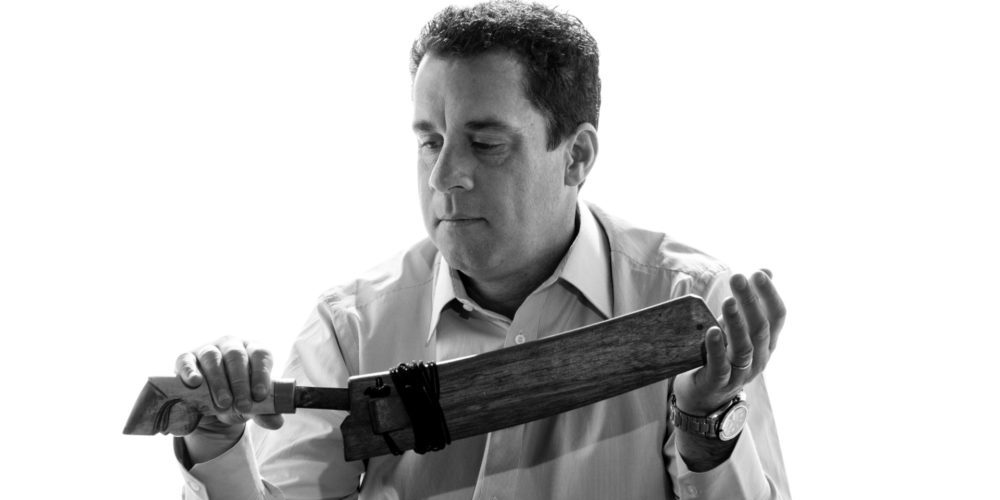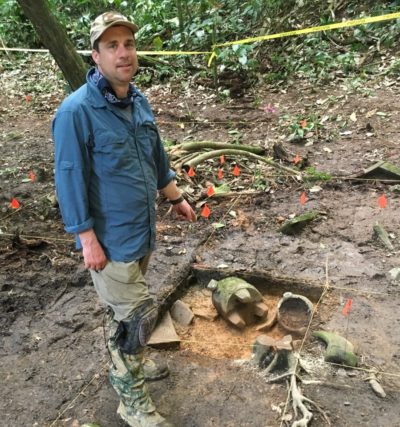
Chris Fisher, whose use of cutting-edge technology has revolutionized modern archaeology, will be the featured speaker for the next installment of the President’s Community Lecture Series.
Fisher, professor in Colorado State University’s Department of Anthropology, will present “Modern technology revealing ancient cities and their secrets.” The event, set for 6:30 p.m. to 8 p.m. on Thursday, June 7 in the Lory Student Center Theater, features an introduction by Frank, Fisher’s lecture and a question-and-answer period.
Ongoing series features CSU’s top scholars
Because of limited space, tickets are required. Tickets, available online, will be distributed on a first-come, first-served basis.
The President’s Community Lecture Series, hosted by CSU President Tony Frank, presents free, public talks by outstanding faculty, to introduce CSU research, entrepreneurship and innovation to the Fort Collins community and beyond.
Fisher will discuss his use of LiDAR, a sophisticated radar system, in his research in Mexico and Honduras. LiDAR images can “see” through dense vegetation, revealing architectural structures that otherwise would likely remain undiscovered.

Fisher, working with fellow anthropology faculty member Steve Leisz, assistant professor of geography, first used LiDAR in the Lake Patzcuaro Basin near Michoacan, Mexico. Fisher had been mapping a newly discovered ancient city and was frustrated with the pace of discovery. That’s when Leisz suggested using LiDAR, and the resulting images revealed a much larger and more complex find than Fisher ever imagined.
“When I first started working at the site we were mapping about one square kilometer per year, and believed the site to be 10 square kilometers,” Fisher said. “That’s at least a decade’s worth of work – and, in the past, would have spanned the entire academic arc of an archeological career. I’m kind of impatient and knew I wanted to do more than work this site during my career. LiDAR completely changed my career and the way modern archaeology is practiced.”
Changing archaeology
LiDAR revealed a site stretching more than 26 square kilometers that included pyramids, a ball court and evidence of housing for thousands of residents.
“We scanned those 26 square kilometers in 45 minutes and had a more accurate site map than would have achieved with 10 years of traditional archeological work,” he added.
Fisher’s expertise in LiDAR application has made him a widely sought-after consultant. His work in a remote area of the Honduran rainforest was featured in the recent New York Times bestselling The Lost City of the Monkey God by Douglas Preston.
Amazing discoveries
After LiDAR images revealed a large and previously unknown city, Fisher and a team that included Preston, a documentary film crew, Honduran archaeologists and support personnel hacked their way through thick jungle infested with deadly snakes, jaguars and disease-carrying insects. Their discovery of hundreds of artifacts from a mysterious civilization was heralded in National Geographic, The New Yorker and other national and international publications.
“I think our work certainly put LiDAR on the map,” Fisher said. “I do believe that it will now be a normal part of any archeological project. Perhaps in 10 years, people will look back at our work here at CSU and say, ‘That’s where it all began.’”
Since its inception four years ago, President’s Community Lecture Series speakers have included Professor of Music, Theatre and Dance Joel Bacon; Professor of Ecosystem Science and Sustainability Robin Reid; Professor of Animal Sciences Temple Grandin; University Distinguished Professors Dr. Stephen Withrow and Diana Wall; Professors Amy Prieto, Lori Peek and Bryan Willson; Ajay Menon, speaking as dean of the College of Business, and Dr. Wayne McIlwraith from the College of Veterinary Medicine and Biomedical Sciences.